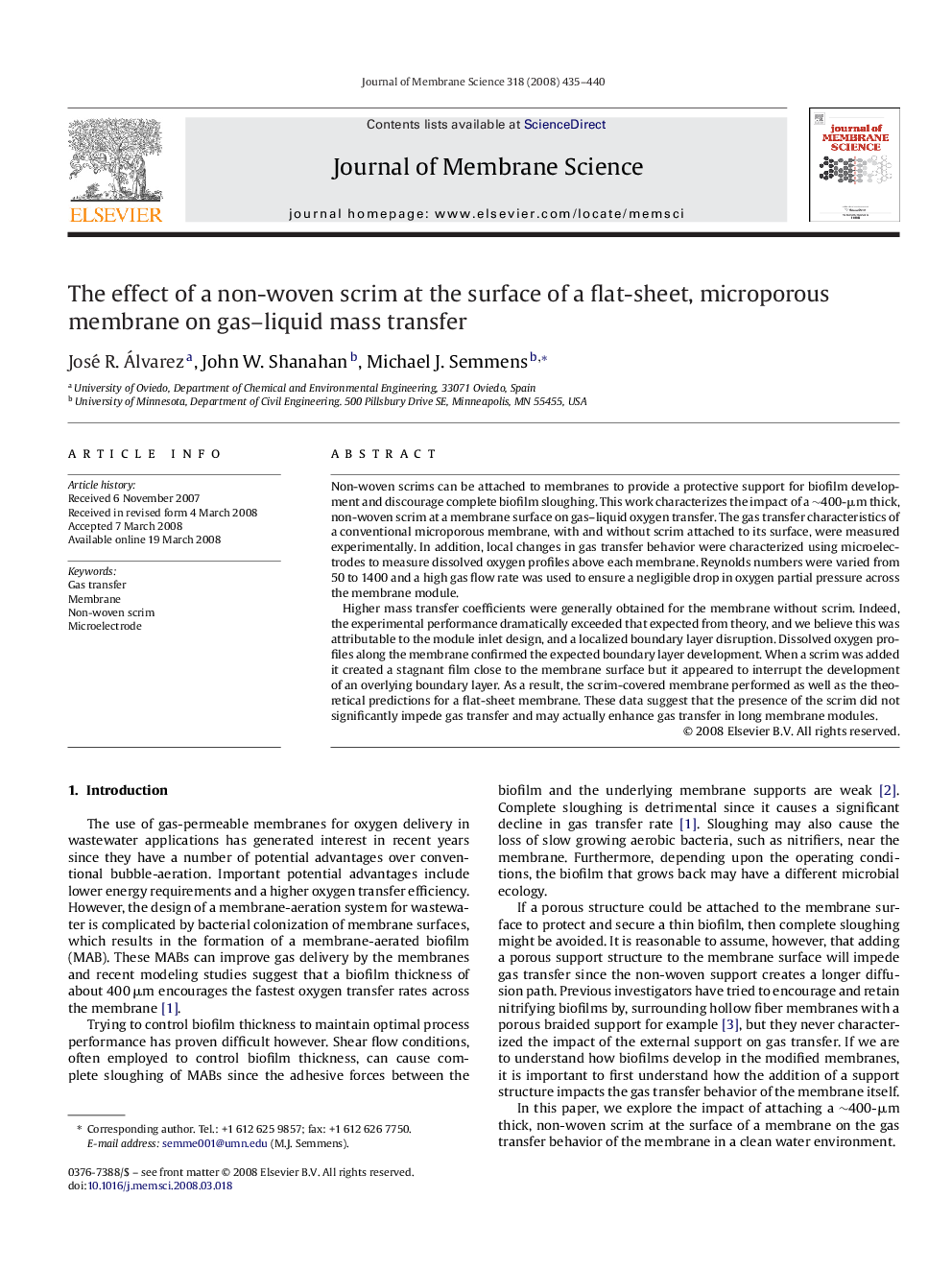| Article ID | Journal | Published Year | Pages | File Type |
|---|---|---|---|---|
| 637966 | Journal of Membrane Science | 2008 | 6 Pages |
Non-woven scrims can be attached to membranes to provide a protective support for biofilm development and discourage complete biofilm sloughing. This work characterizes the impact of a ∼400-μm thick, non-woven scrim at a membrane surface on gas–liquid oxygen transfer. The gas transfer characteristics of a conventional microporous membrane, with and without scrim attached to its surface, were measured experimentally. In addition, local changes in gas transfer behavior were characterized using microelectrodes to measure dissolved oxygen profiles above each membrane. Reynolds numbers were varied from 50 to 1400 and a high gas flow rate was used to ensure a negligible drop in oxygen partial pressure across the membrane module.Higher mass transfer coefficients were generally obtained for the membrane without scrim. Indeed, the experimental performance dramatically exceeded that expected from theory, and we believe this was attributable to the module inlet design, and a localized boundary layer disruption. Dissolved oxygen profiles along the membrane confirmed the expected boundary layer development. When a scrim was added it created a stagnant film close to the membrane surface but it appeared to interrupt the development of an overlying boundary layer. As a result, the scrim-covered membrane performed as well as the theoretical predictions for a flat-sheet membrane. These data suggest that the presence of the scrim did not significantly impede gas transfer and may actually enhance gas transfer in long membrane modules.
